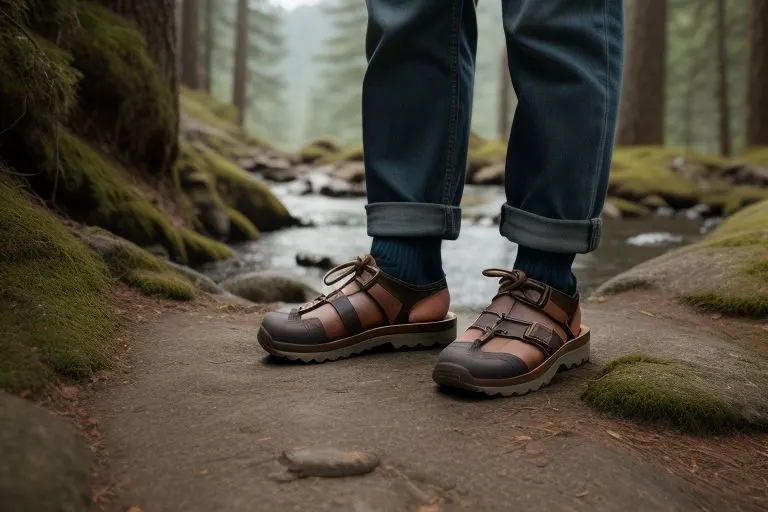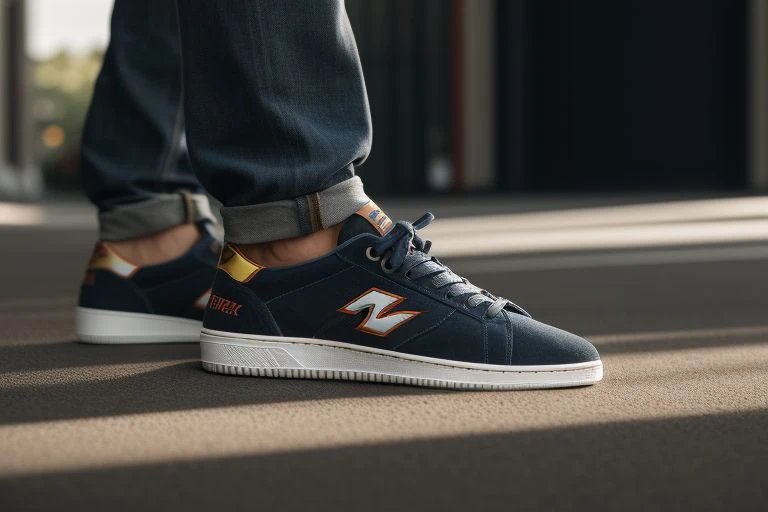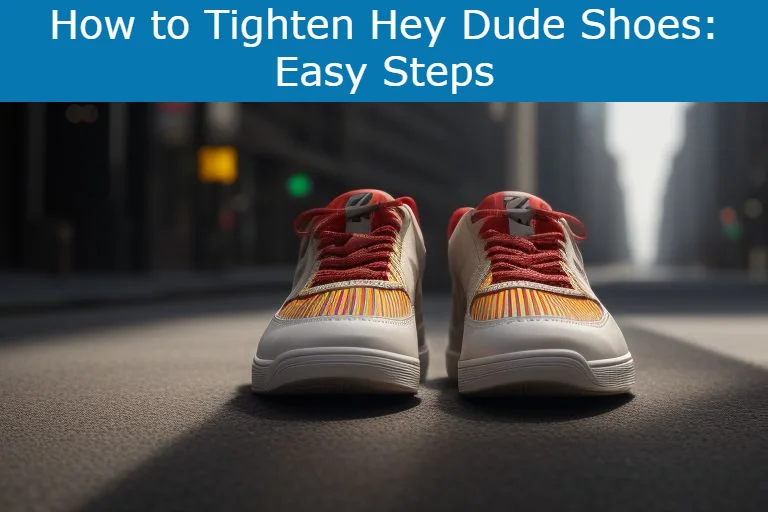Hiking in Birkenstocks – Are Birkenstocks the New Hiking Gear?
Hiking in Birkenstocks – As outdoor adventures gain popularity, explorers constantly seek innovative and comfortable hiking gear.
Among the many trends, one that seems to have caught the public eye is hiking in Birkenstocks.
This unconventional choice has sparked curiosity and led many to question – Are Birkenstocks the new hiking gear?
Table of Contents
Hiking in Birkenstocks – Pros And Cons
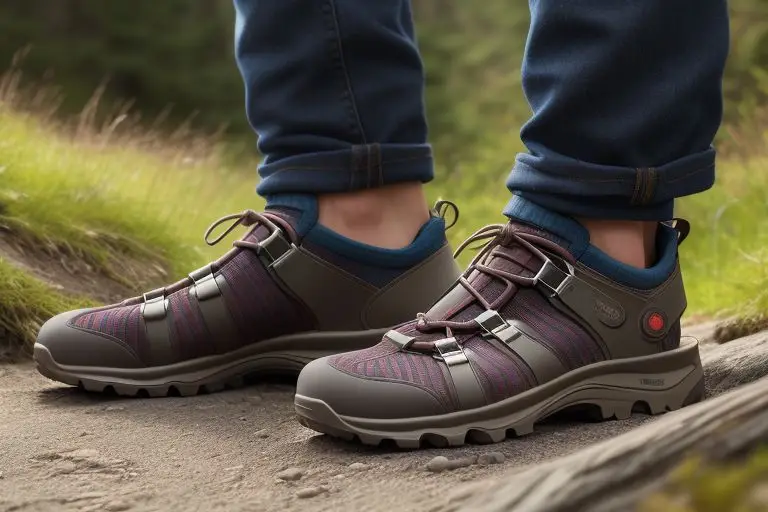
Pros
1. **Comfort**: The contoured footbed molds to the shape of the wearer’s foot over time, enhancing comfort during long hikes.
2. **Breathability**: Their open design ensures feet stay cool and dry, particularly during warm weather hikes.
3. **Lightweight**: Unlike traditional heavy boots, Birkenstocks offer a sleeker, less bulky alternative.
4. **Personal Style**: Available in various colors and patterns, they allow hikers to express their individual style.
5. **Eco-Friendly**: Made from sustainable materials, they align with the increasing emphasis on sustainability in outdoor gear.
Cons
1. **Lack of Ankle Support**: They do not provide the same level of ankle stability as hiking boots, potentially increasing the risk of injury.
2. **Limited Grip**: On slippery or uneven surfaces, their grip may not be as reliable as traditional boots.
3. **Exposure to Elements**: Their open design leaves feet vulnerable to sharp objects, insects, and harsh weather conditions.
4. **Durability**: Although made from durable materials, they may not withstand rough terrains as well as conventional hiking boots.
The Rising Trend of Hiking in Birkenstocks
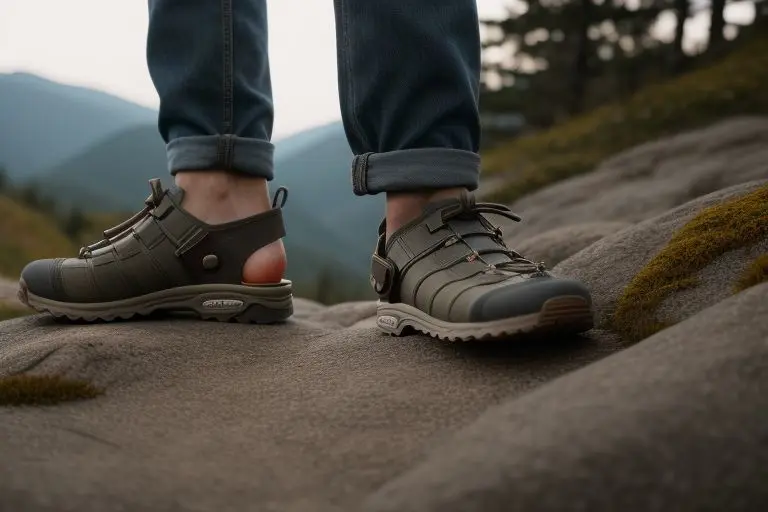
The hiking trend in Birkenstocks has gained significant momentum in recent years, and its popularity is evident across various social media platforms.
Adventure seekers from all walks of life embrace these sandals for their outdoor explorations, with hikers everywhere sharing snapshots of their Birkenstock-adorned feet against stunning nature backdrops. This footwear trend has transcended its initial surprise factor and is now a full-blown phenomenon within the hiking community.
Several prominent adventure bloggers and influencers have also hopped on the Birkenstock bandwagon, lending further credibility to this unconventional hiking gear.
They regularly share their experiences and insights about hiking in Birkenstocks, often focusing on their suitability for lighter, non-technical treks. This, in turn, is inspiring more and more hikers to consider Birkenstocks as a viable option for their own hiking pursuits.
Influencers often highlight the sandals’ comfort, breathability, and versatility in their posts. They underscore how Birkenstocks’ design, while non-traditional, provides hikers with a refreshing alternative to the standard hiking boot.
It’s not just the practical aspects of Birkenstocks that are winning over the hiking community, either. The element of style they bring to the trail also contributes to their appeal.
The enthusiasm for Birkenstocks in the hiking world shows no signs of waning, with many outdoor enthusiasts keen to experiment with different hiking gear and explore unique trail experiences.
However, it’s important to remember that as with any hiking equipment, its effectiveness ultimately depends on the individual hiker and the specific nature of their adventure. As this Birkenstock trend continues to evolve, only time will tell how they fare as a long-term hiking footwear choice.
The Unconventional Design of Birkenstocks
What truly differentiates Birkenstocks from the conventional hiking gear is their unique, distinct design. Famed for their recognizable two-strap feature equipped with adjustable buckles, these sandals offer the flexibility of a personalized fit, accommodating different foot shapes and sizes with ease.
Unlike the traditional bulk and heaviness associated with most hiking boots, Birkenstocks are crafted to provide a sleeker, more minimalist aesthetic to hikers.
Their quintessential contoured footbed is more than just a design element; it provides a layer of comfort and support that many hikers find elusive in regular hiking boots.
The footbed, made from a proprietary blend of cork and latex, moulds to the shape of the wearer’s foot over time, resulting in an almost custom-made fit. This can significantly enhance comfort levels, especially during long hikes where foot fatigue can become a real issue.
Moreover, the style element they add to the generally functional hiking gear is a refreshing change. Their distinctive design, combined with the variety of colors and patterns available, gives outdoor enthusiasts the opportunity to express their personal style on the trails, deviating from the conventional brown and black hiking boots.
Interestingly, Birkenstocks’ design also aligns with the increasing emphasis on sustainability in outdoor gear. The materials used in Birkenstocks are eco-friendly and durable, with the cork harvested from regenerative oak trees and the leather sourced responsibly.
However, the open design stands out the most, bringing breathability and a liberating feel of freedom to the wearer’s feet. While this may not offer the same level of protection as enclosed boots, the trade-off for cool, comfortable feet during warm weather hikes may well be worth it for some.
In short, Birkenstocks’ unconventional design merges function with fashion, challenging the norms of hiking footwear. Their unique design characteristics bring comfort, personalization, style, and sustainability to the table, positioning them as a unique alternative to traditional hiking boots. But as with all gear, its suitability comes down to the nature of the hike and personal preference.
Are Birkenstocks a Practical Choice for Hiking?
When considering Birkenstocks as your hiking footwear, the nature of your trail plays a significant role. Birkenstocks could be an outstanding option if you plan a leisurely, non-technical hike on well-groomed paths.
Their standout features, such as excellent comfort, prevention of foot overheating, and lightweight design, make them well-suited for these excursions.
However, if you’re taking on more challenging steep, rocky, or not well-maintained trails, conventional hiking boots may be a more prudent option. The superior grip and increased foot protection offered by traditional boots are critical in these tougher terrains, ensuring your safety and reducing the risk of injury.
In such instances, Birkenstocks might not be the most practical choice due to their lack of ankle support and limited grip, which can increase the risk of accidents. Also, while advantageous for breathability, their open design might expose your feet to sharp rocks, thorns, or potentially harmful wildlife.
While Birkenstocks can be a practical choice for certain hiking situations, they may not be suitable for all types of trails or weather conditions. Before deciding on this unconventional hiking footwear, it’s crucial to consider the nature of your planned hike, the trail conditions, and your personal comfort preferences.
Considerations when Hiking with Birkenstocks
Before embarking on your trek outfitted with Birkenstocks, a few key factors should not be overlooked. First and foremost, give your Birkenstocks a trial run on shorter, less challenging walks.
This will allow your foot to mold to the cork-latex footbed, enhancing comfort during your hike. It’s also an opportunity to identify and address any potential discomforts during the break-in period.
Given the open design of Birkenstocks, sun protection for your feet becomes crucial. When preparing for your hike, apply ample sunscreen to the exposed areas of your feet to guard against painful sunburns. This is essential for summer hikes when UV radiation levels are at their highest.
Remember that unexpected trail conditions can turn up even on well-maintained paths. A sudden downpour could turn a dry trail into a slippery challenge, which could be a problem given Birkenstocks’ limited grip.
Similarly, encountering an unexpected stretch of rocky terrain could pose risks due to the sandals’ lack of foot protection. To avoid being caught off-guard, consider packing a pair of traditional hiking boots or shoes as a backup option.
Lastly, your personal comfort should be a deciding factor. If you’re accustomed to the snug fit and ample support provided by traditional hiking boots, transitioning to the more open and flexible Birkenstocks could take some getting used to.
Listen to your body, and adjust your gear accordingly. If you find that you’re more comfortable hiking in boots, it’s okay to stick with what works best for you.
In essence, hiking with Birkenstocks requires careful consideration and planning. By considering these factors and preparing accordingly, you can ensure a safer, more enjoyable hiking experience.
The Verdict: Trend or Practical Choice?
The answer to whether Birkenstocks are just a trending fashion statement or a practical choice for hiking isn’t black and white. Their suitability hinges heavily on the nature of the trek. For casual, well-trodden paths, Birkenstocks can offer an exceptional blend of comfort and breathability, making them a valid choice.
However, their limitations, including lack of ankle support and a subpar grip, make them less practical for more challenging, uneven trails. Thus, the time-honored hiking boots still hold their ground as the go-to gear for rugged terrains.
In summary, can Birkenstocks be considered new hiking gear? Depending on the terrain and personal comfort preferences of the hiker, they might be. Regardless, this unconventional hiking gear trend is undeniably intriguing and worthy of consideration.
As with any hiking equipment, the key lies in understanding its strengths and weaknesses, and aligning them with the specific requirements of your hiking adventure. Always prioritize safety, comfort, and practicality over trends when choosing your hiking gear.

